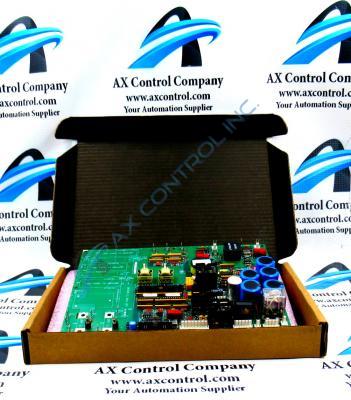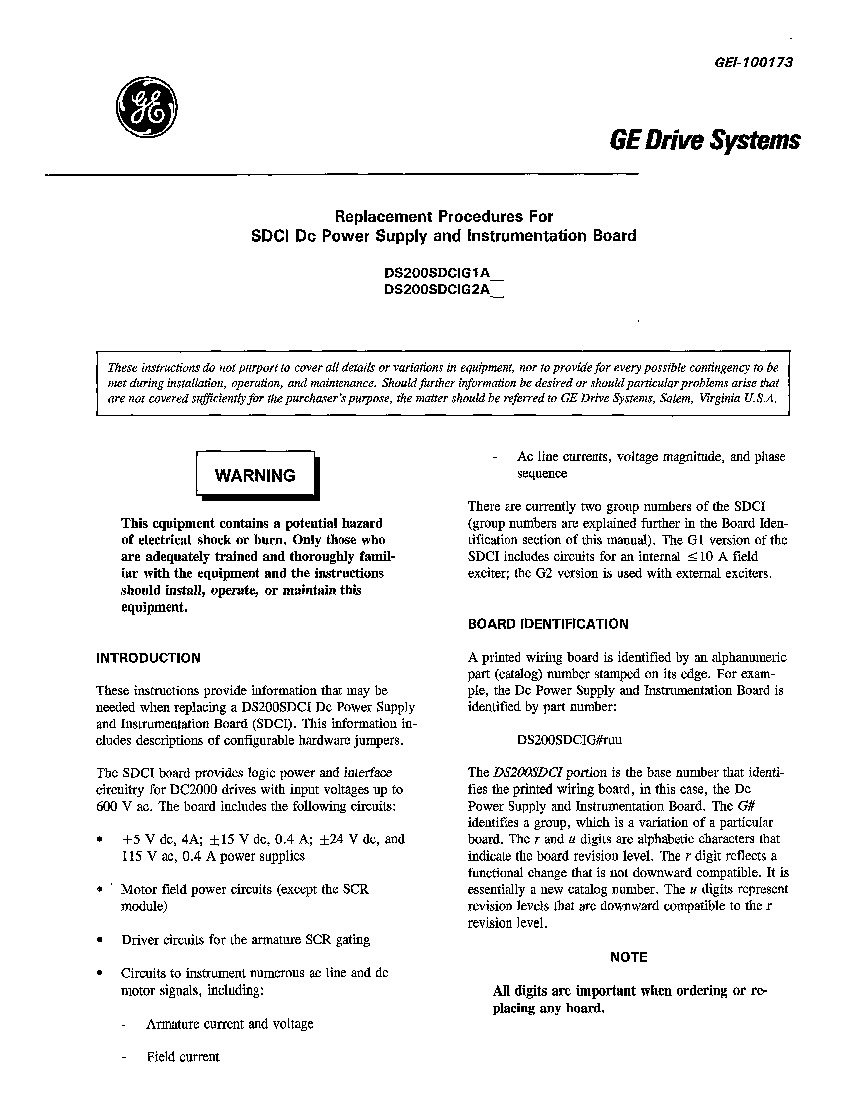About the DS200SDCIG2ABB
This DS200SDCIG2ABB printed circuit board product offering from General Electric was, as discussed above, originally manufactured for placement specifically in the Mark V Turbine Control System Series. As you have probably been able to guess based off of its full extended series name, the Mark V Series that this DS200SDCIG2ABB PCB belongs to has a set of specific applications in the control and management systems of compatible and popular wind, steam, and gas turbine automated drive assemblies. With this PCB's Mark V Series' various possible alternative energy applications existing, it must still be considered an obsolete product series overall, as it was discontinued for manufacture as a legacy product series in one of the many years past its original General Electric Series conception. The Mark V Series that this DS200SDCIG2ABB PCB belongs to is not entirely an unattractive option on the general automated industrial marketplace, however; as it exists as one of the lastly-developed General Electric product series to make use of their patented Speedtronic control system technology first released alongside the Mark I Series in the mid to later 1960s.
Hardware Tips and Specifications
The GE DC Power Supply and Instrumentation Board DS200SDCIG2ABB serves as an interface to DC2000 drives, and utilizes its own specialized series of hardware components and component specifications to achieve this intended Mark V Series functionality. Whenever you install, remove, troubleshoot, or repair the DS200SDCIG2ABB, the procedure should be performed only by a qualified individual. The person must be knowledgeable about how to work around high-voltage devices, such as the board and the drive it is installed in. The person should have experience with installing and repairing the specific drive and board. Since every installation is different with a unique design for electrical cabling for power, control signals, grounding wires, and communications cabling, it is best to make sure that the servicer or installer has experience with the installation. Given the fact that this DS200SDCIG2ABB PCB belongs to a now-obsolete legacy product series, it is not surrounded by a plethora of reliable instructional manual materials online. With this being the case, the DS200SDCIG2ABB functional product number itself can be considered a strong supplementary source of DS200SDCIG2ABB Board hardware information; coding for specific details in a series of consecutive functional naming chunks. For instance, the DS200SDCIG2ABB functional product number begins with the dual-functional DS200 series tag delegating this DS200SDCIG2ABB PCB's normal Mark V Series assembly as well as its domestic original manufacture location. Some of the other relevant DS200SDCIG2ABB Board hardware information revealed through functional part number includes its:
- SDCI functional product acronym
- Group 2 Mark V Series product grouping
- Normal PCB coating style
- A-rated primary functional revision
- B-rated secondary functional revision
- B-rated artwork configuration revision
The experienced installer or servicer should always note the jumper settings and cabling on the old board before attempting to install the new board. In that way, the installer or servicer can quickly transfer the jumper settings from the old board to the new board to duplicate the exact configuration. If the replacement board is a newer version of the same board, it might be different in appearance. It might have different components and the connectors, jumpers, fuses, LEDs, and other hardware might be located differently. Generally, voltage limitation and suppression in the normal Mark V Series assembly of this DS200SDCIG2ABB DC Power Supply and Instrumentation Board would be introduced with its normal Mark V Series assembly's acceptance of a series-standardized selection of components including various capacitors, resistors, transistors, and integrated circuits, as well as five total fuses with individual factory-printed nomenclature labels as identified in the DS200SDCIG2ABB instructional manual embedded in the manuals tab above for your convenience. Be mindful that even if the boards look different and are different versions, compatibility is maintained between the boards. That is, the performance of the drive will not be affected by the change in the version of the board. This true as long as all jumpers are set on the new board as they were on the old board.











